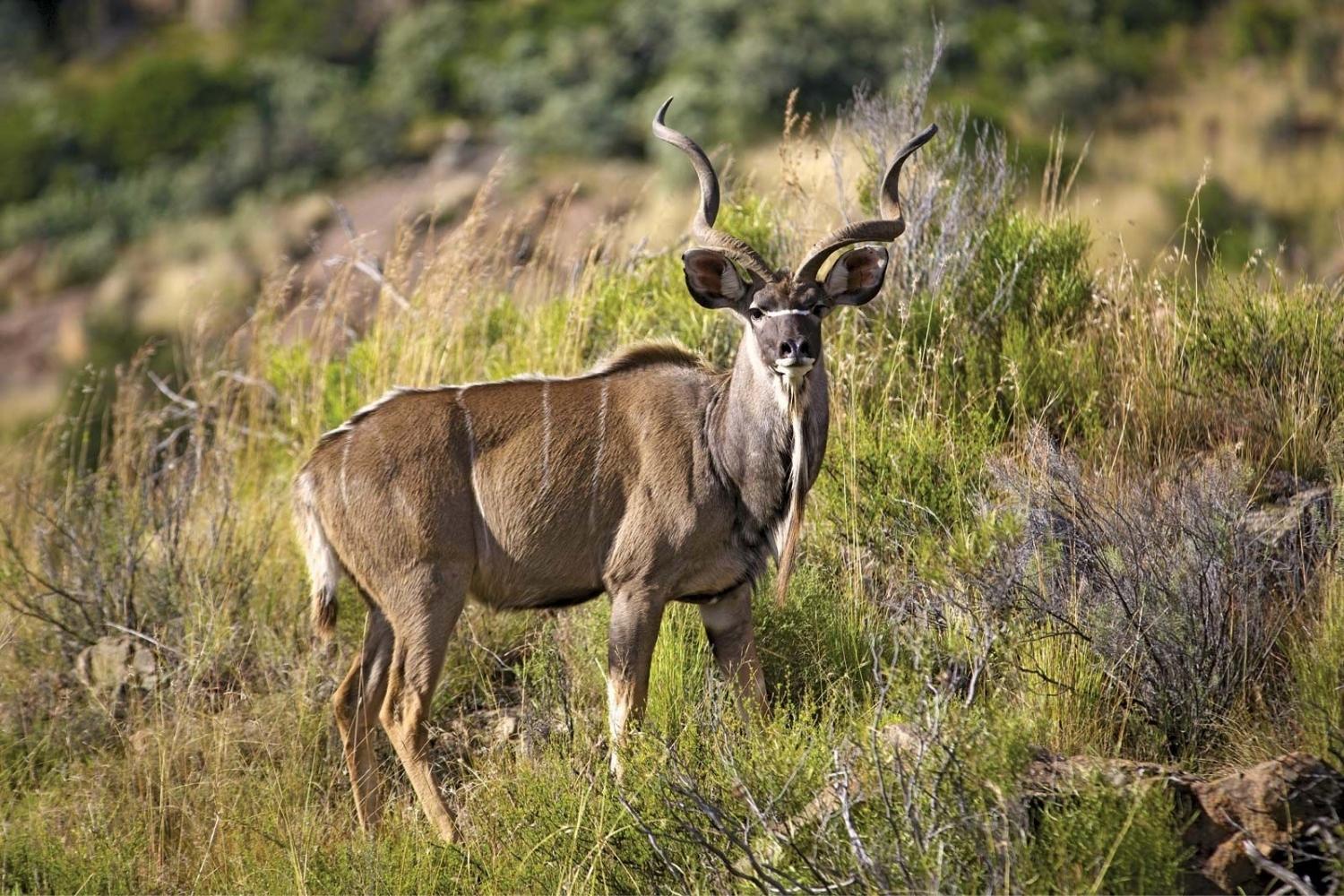
Kudu are fascinating creatures that roam the African savannas and woodlands. Known for their striking spiral horns and graceful movements, these antelopes capture the imagination of wildlife enthusiasts and researchers alike. But what makes kudu so special? Kudu possess unique adaptations that help them thrive in their environment, from their keen senses to their impressive jumping abilities. Their diet, social structure, and even their role in local ecosystems offer a glimpse into the intricate balance of nature. Whether you're a budding zoologist or just curious about these majestic animals, learning about kudu can deepen your appreciation for the natural world. Ready to dive into some intriguing facts? Let's get started!
What is a Kudu?
Kudus are majestic antelopes found in Africa, known for their impressive spiral horns and striking appearance. These creatures are fascinating and full of surprises. Let's dive into some intriguing facts about them.
-
Kudus belong to the genus Tragelaphus and are part of the Bovidae family, which includes cattle, goats, and sheep.
-
There are two species of kudu: the greater kudu (Tragelaphus strepsiceros) and the lesser kudu (Tragelaphus imberbis).
-
Greater kudus are larger, with males weighing up to 600 pounds and standing about 5 feet tall at the shoulder.
-
Lesser kudus are smaller, with males weighing around 220 pounds and standing about 4 feet tall at the shoulder.
Physical Characteristics
Kudus have unique physical traits that make them stand out in the wild. Their appearance is not only beautiful but also functional.
-
Male kudus have long, spiral horns that can grow up to 6 feet in length, making them one of the most impressive antelopes.
-
Female kudus do not have horns, which helps them stay agile and avoid predators.
-
Their coats are usually a reddish-brown or bluish-gray color, with white stripes running down their sides for camouflage.
-
Kudus have large, rounded ears that provide excellent hearing, helping them detect predators from a distance.
Habitat and Range
Kudus are adaptable animals that thrive in various environments across Africa. Their habitat preferences and range are quite interesting.
-
Greater kudus are found in eastern and southern Africa, from Ethiopia to South Africa.
-
Lesser kudus are primarily found in eastern Africa, including Kenya, Tanzania, and Somalia.
-
They prefer habitats with dense bush or woodland, which provide cover from predators and access to food.
-
Kudus are also found in mountainous regions, where they can navigate steep terrain with ease.
Diet and Feeding Habits
Kudus have a diverse diet that helps them survive in their natural habitats. Their feeding habits are both fascinating and essential for their survival.
-
Kudus are herbivores, primarily feeding on leaves, shoots, and grass.
-
They are known to browse on a variety of plants, including acacia, wild fruits, and flowers.
-
During the dry season, kudus can survive on moisture-rich plants, reducing their need for water.
-
Kudus are ruminants, meaning they have a four-chambered stomach that helps them digest tough plant material efficiently.
Behavior and Social Structure
Kudus exhibit interesting behaviors and social structures that help them thrive in the wild. Understanding their social dynamics provides insight into their survival strategies.
-
Kudus are generally shy and elusive, often hiding in dense vegetation to avoid predators.
-
Males are usually solitary or form small bachelor groups, while females and their offspring form larger herds.
-
During the mating season, males engage in dramatic horn battles to establish dominance and win the right to mate.
-
Kudus communicate using a variety of vocalizations, including grunts, barks, and whistles.
Predators and Threats
Despite their impressive size and agility, kudus face numerous threats in the wild. Their survival depends on their ability to evade predators and adapt to changing environments.
-
Major predators of kudus include lions, leopards, hyenas, and wild dogs.
-
Humans pose a significant threat to kudus through habitat destruction, hunting, and poaching.
-
Kudus are also susceptible to diseases such as anthrax and rinderpest, which can decimate populations.
-
Conservation efforts are in place to protect kudu populations, including habitat preservation and anti-poaching measures.
Reproduction and Lifespan
Kudus have fascinating reproductive behaviors and life cycles. Their ability to reproduce and raise offspring is crucial for the survival of the species.
-
Female kudus give birth to a single calf after a gestation period of about 8 months.
-
Calves are hidden in dense vegetation for the first few weeks of life to protect them from predators.
-
Kudus can live up to 15 years in the wild, although many do not reach this age due to predation and other threats.
Final Thoughts on Kudus
Kudus are truly fascinating creatures. From their impressive spiral horns to their unique social behaviors, they offer a glimpse into the wonders of the animal kingdom. These majestic antelopes are not just beautiful but also play a crucial role in their ecosystems. They help maintain the balance by grazing on vegetation, which in turn supports other wildlife. Understanding and appreciating kudus can inspire us to protect their habitats and ensure their survival. So next time you see a kudu, whether in the wild or a documentary, remember these incredible facts. They’re more than just animals; they’re vital parts of our natural world. Keep exploring and learning about such amazing creatures. The more we know, the better we can protect them.
Was this page helpful?
Our commitment to delivering trustworthy and engaging content is at the heart of what we do. Each fact on our site is contributed by real users like you, bringing a wealth of diverse insights and information. To ensure the highest standards of accuracy and reliability, our dedicated editors meticulously review each submission. This process guarantees that the facts we share are not only fascinating but also credible. Trust in our commitment to quality and authenticity as you explore and learn with us.
